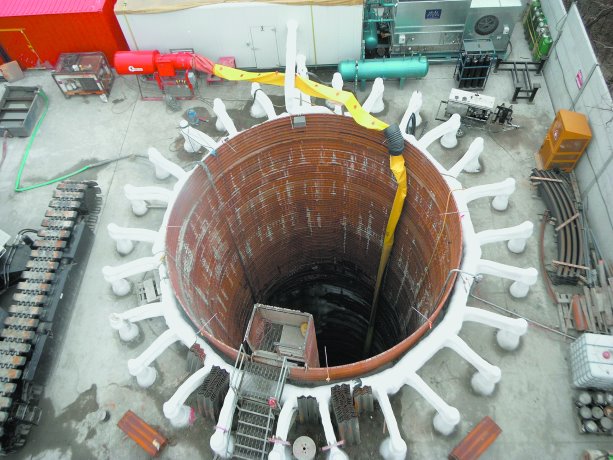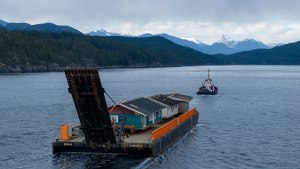The first Canadian civil application of ground freezing used to facilitate construction of a soon-to-be-completed hydro tunnel in Toronto has taken place, according to one contractor.
The three-metre diameter tunnel is 2.4-kilometres long and the use of ground freezing eliminated the need for messy, slurry wall systems that would have otherwise been necessary for the deep shafts on this project, says Gary Benner, a former vice-president of Technicore Underground Inc., the general contractor for the $35-million Hydro One Mid-Town Tunnel.
Ground freezing is an environmentally beneficial construction process because it can stabilize otherwise flowing soils with no impacts on groundwater levels says Benner, who now operates his own consulting firm.
"In the urban environment of central Toronto, the slurry wall methodology would have been unacceptable to (adjacent) residents."
Underway since 2011 and scheduled to wrap up by the end of January, the project includes the construction of the tunnel in shale bedrock approximately 60 metres (192 feet) below ground level and three shafts.
Two are terminal shafts which will connect with above ground hydro junctions, and the third is a ventilation shaft. That shaft and one terminal shaft are 54-metres (180 feet) deep. The second terminal is 73-metres (240 feet) deep.
As the three had to be built through 45 metres (135 feet) of unstable soil, that’s where ground freezing was crucial. Retired freeze consultant Jerzy Konopka was the consultant.
A number of 37-metre (120-foot)-deep pipes were drilled around the circumference of each shaft site and right into the bedrock. Then brine was channeled through the pipes in a continuous cycling operation from an onsite mobile refrigeration plant, says Technicore project manager Mike MacFarlane.
"It is the same process by which hockey rinks are frozen."
Temperature probes were used to gauge the ground temperature which had to be lowered to minus five degrees Celsius.
It took four to six weeks to freeze the soil before the shafts inside the "frozen donuts" could be excavated, he says.
"We were able to cycle the freeze plant to turn it off at night which helped greatly to mollify the residents who were adjacent to the very small shaft sites.
Once the concrete liners were installed, the freezing was turned off and the ground returned to its original unfrozen state with no environmental impact. There was no need for caissons or dewatering."
All the work, including the freezing, the excavation, and the liner installation was completed at one shaft before moving to the next one, he says.
Although ground freezing is used in potash mining applications in the Prairie provinces, Technicore is probably the only civil contractor using the technology in Canada, says MacFarlane.
As for the tunnel excavation, it was achieved with the use of a 152-inch tunnel boring machine (TBM) which had to go under a railroad track, a park, and Toronto’s Don River. The tunnel will carry six, 133-KV cables and replace an aging wire distribution system, says MacFarlane.
The base of operations was the ventilation shaft compound just off the city’s Mt. Pleasant Road. Final work includes the construction of a maintenance/inspection staircase in the ventilation shaft and some internal structural work, he says.











Recent Comments
comments for this post are closed